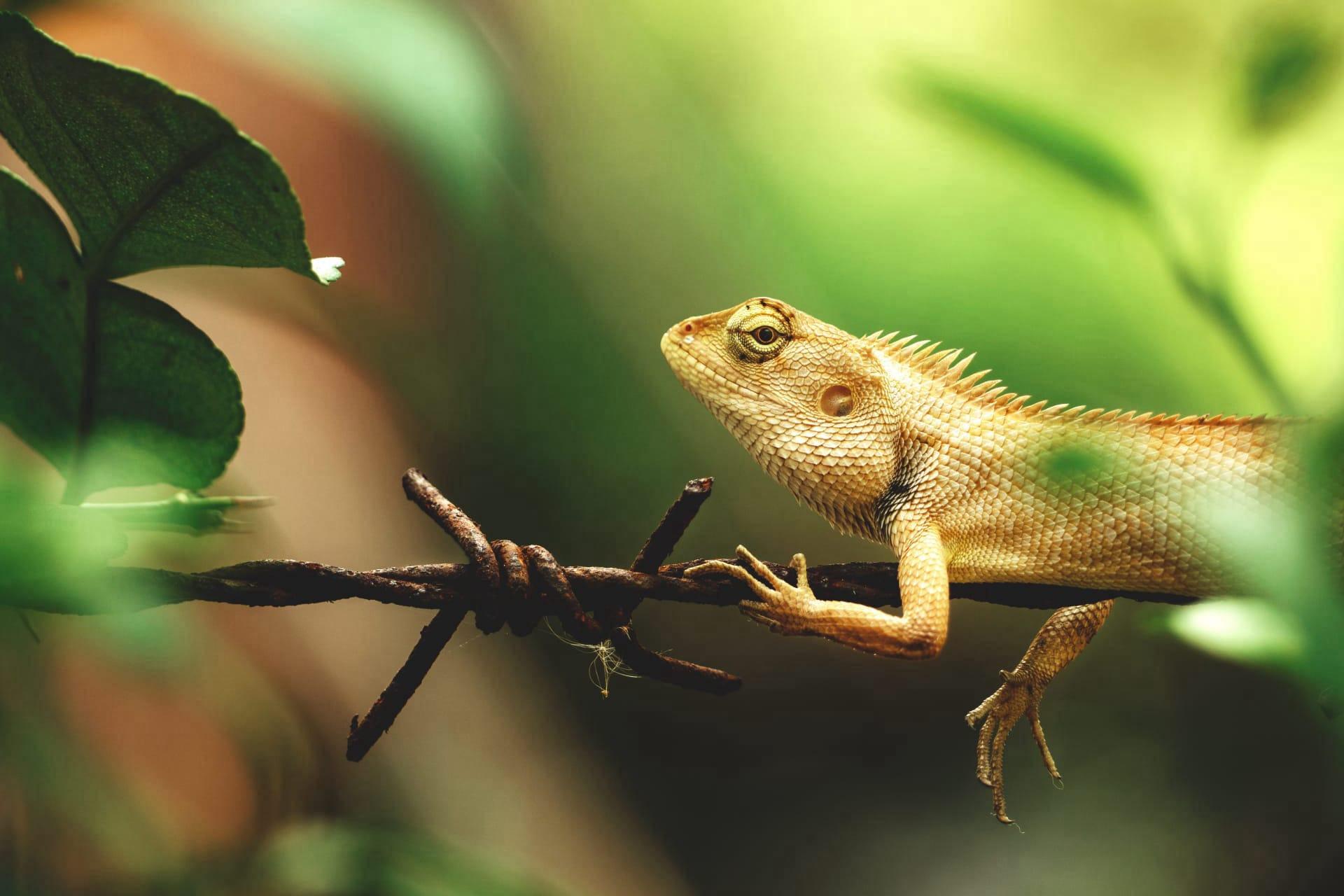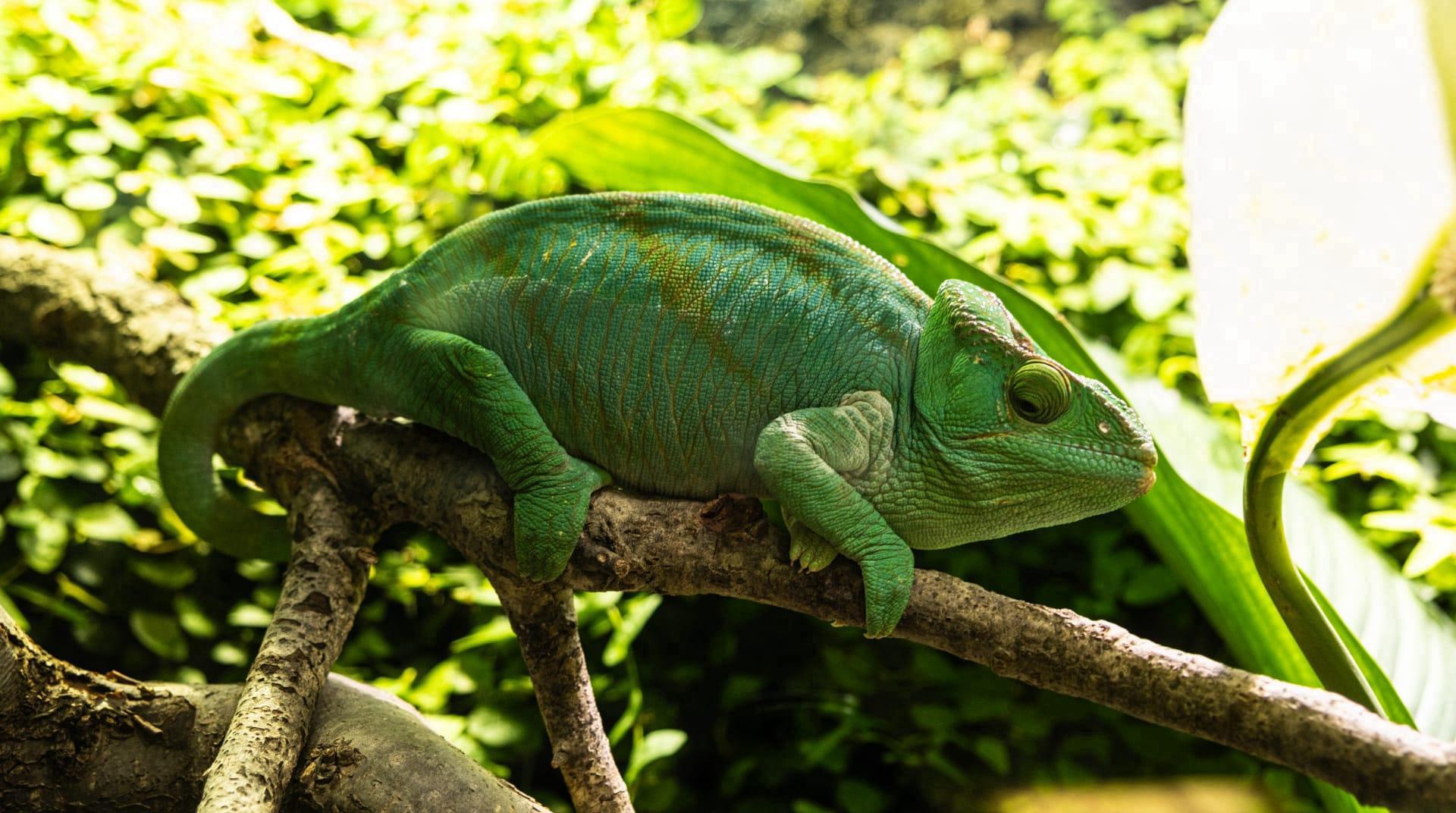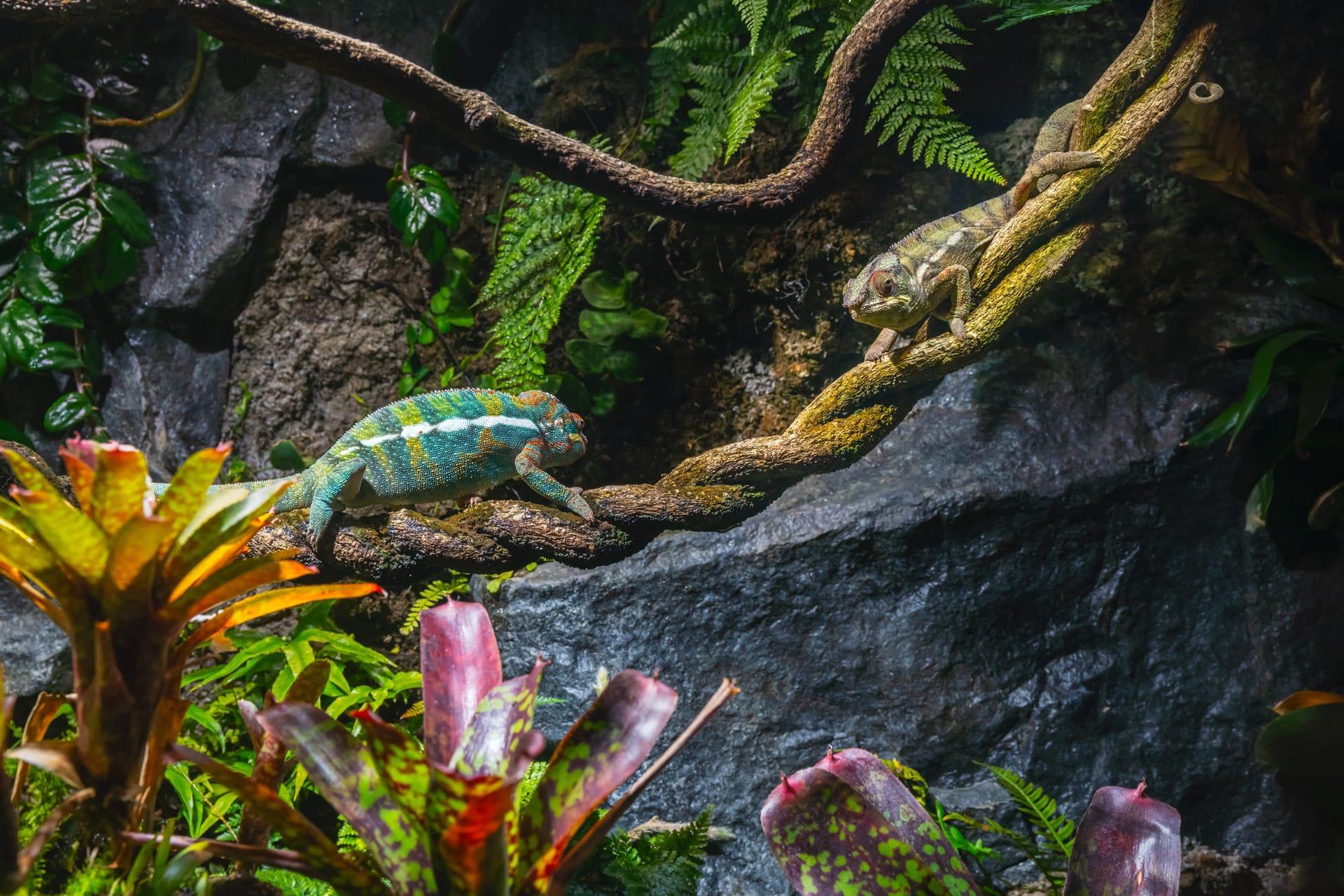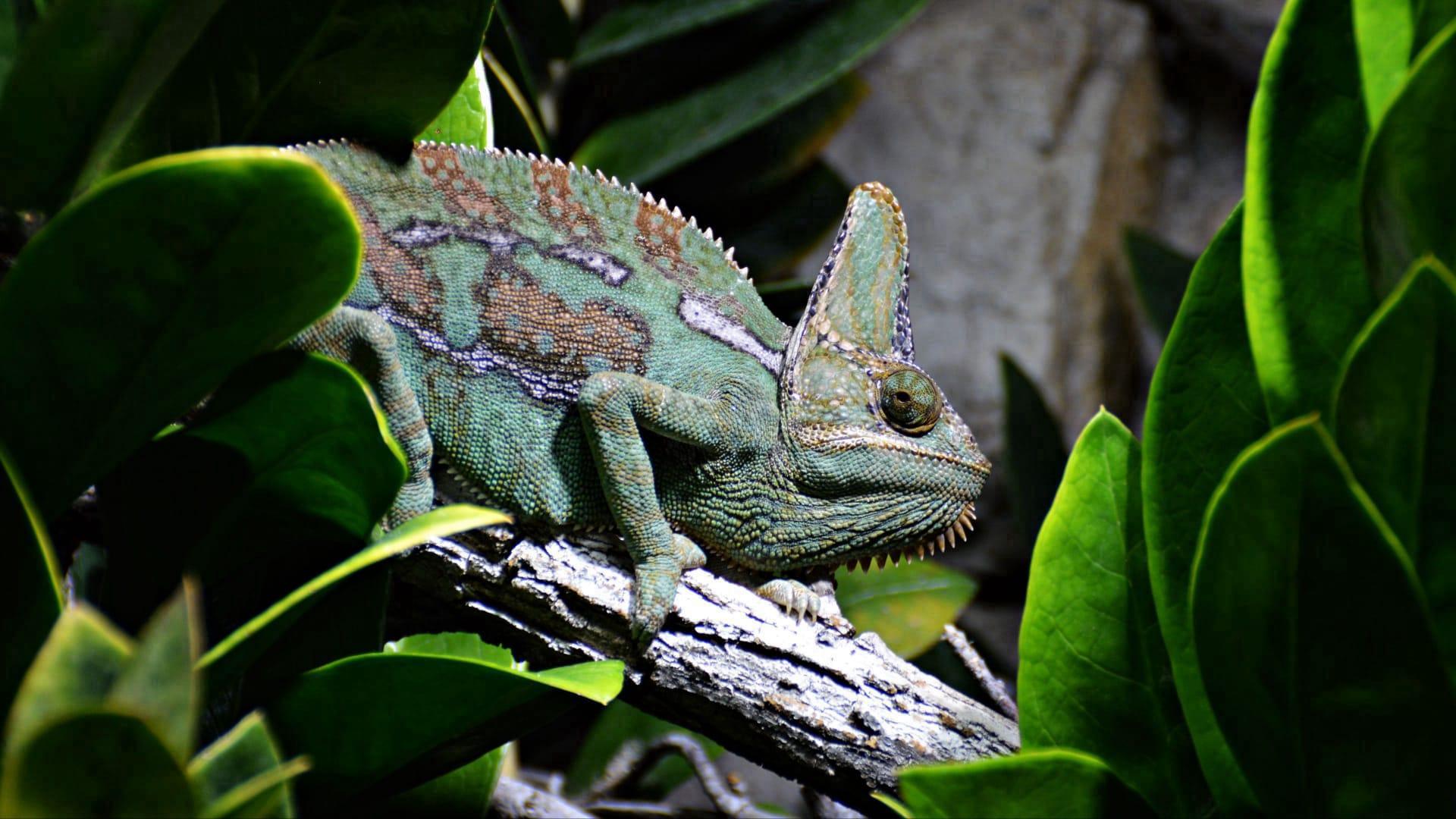Chameleon Trivia
- Home /
- Trivia Question /
- Animal /
- Chameleon Trivia
1
Question: How do chameleons change their color?
Answer: Chameleons change color through specialized cells called chromatophores in their skin. These cells contain pigments and are layered. The top layer, or xanthophores and erythrophores, has yellow and red pigments. Below them, melanophores contain the dark pigment melanin. At the bottom, guanophores reflect light and can appear blue or white. By expanding or contracting these cells, chameleons can rapidly change between colors like green, brown, blue, yellow, red, and black, aiding in communication and temperature regulation.
Question: What is the lifespan of a chameleon?
Answer: The lifespan of chameleons varies by species, but most live between 2 to 8 years. In captivity, with optimal care, some species, like the Veiled Chameleon, can live up to 8 years, while others, like the Panther Chameleon, have a shorter lifespan of about 5 years. Factors influencing their lifespan include species, environment, diet, and quality of care. Wild chameleons often have shorter lifespans due to predation and habitat challenges.

2
Question: Do chameleons change color to blend into their surroundings?
Answer: It's a common misconception that chameleons change color primarily for camouflage. While color change can help them blend into their surroundings, it's more often used for communication and temperature regulation. For example, a chameleon might turn darker to absorb more heat or show bright colors to assert dominance or attract a mate. Their natural color patterns are already quite effective for blending into their habitat.
Question: Can chameleons see in 360 degrees?
Answer: Chameleons have a unique 360-degree vision due to their independently mobile eyes. They can move their eyes in different directions simultaneously, allowing them to have a near 360-degree field of vision and a high degree of depth perception. This ability is crucial for spotting prey and predators. However, they cannot see directly behind them; their field of vision covers about 342 degrees, with a small blind spot at the back of their head.

3
Question: What do chameleons eat?
Answer: Chameleons are primarily insectivores, meaning they eat insects. Their diet includes crickets, roaches, worms, and flies. Larger chameleons might also eat small birds and lizards. They have long, sticky tongues that can extend rapidly to catch prey. In captivity, it's important to provide a varied diet and calcium supplements to ensure their health. Some species, like the Veiled Chameleon, also eat plant matter.
Question: How do chameleons give birth?
Answer: Chameleons can be oviparous or viviparous, depending on the species. Oviparous chameleons lay eggs, which they bury in a moist, warm place in the ground. The eggs can take from 4 to 24 months to hatch, depending on the species and environmental conditions. Viviparous species, like the Jackson's Chameleon, give live birth to fully formed young after a gestation period of about 5 to 6 months.

4
Question: How long is a chameleon's tongue?
Answer: A chameleon's tongue can be incredibly long, sometimes as long as or longer than its body. This adaptation allows them to catch prey from a distance. For instance, a Panther Chameleon, which can be about 20 inches long, might have a tongue that extends up to 20 inches. Their tongue shoots out at high speed, reaching its full extension in just a fraction of a second.
Question: Can chameleons hear?
Answer: Chameleons don't have external ears like mammals, but they can detect sound. They perceive sound through bone conduction, feeling vibrations in their surroundings. This ability helps them be aware of potential threats or the presence of prey. However, their hearing range is limited compared to many other animals, and they rely more on their vision for sensing their environment.

5
Question: Are all chameleons able to change color?
Answer: While most chameleons can change color to some degree, the extent and range of color change vary among species. Some, like the Panther Chameleon, exhibit dramatic color changes, while others might have more subtle shifts. Factors influencing their color-changing ability include species, age, and environmental conditions. It's also important to note that color change isn't instantaneous; it can take a few minutes to several hours, depending on the species and the reason for the change.
Question: How many species of chameleons are there?
Answer: There are around 200 species of chameleons known to science. These fascinating reptiles are known for their unique characteristics, including their ability to change color and their independently mobile eyes. Chameleons are primarily found in Africa, Madagascar, southern Europe, and some parts of Asia.